Monika Pfistner is the rad lady in charge of Treeline Wood and Floral Design. We met up at her little shop thirty minutes north of Portland, Maine to chat about wood grain, utilitarian art, and the dangers of Instagram!
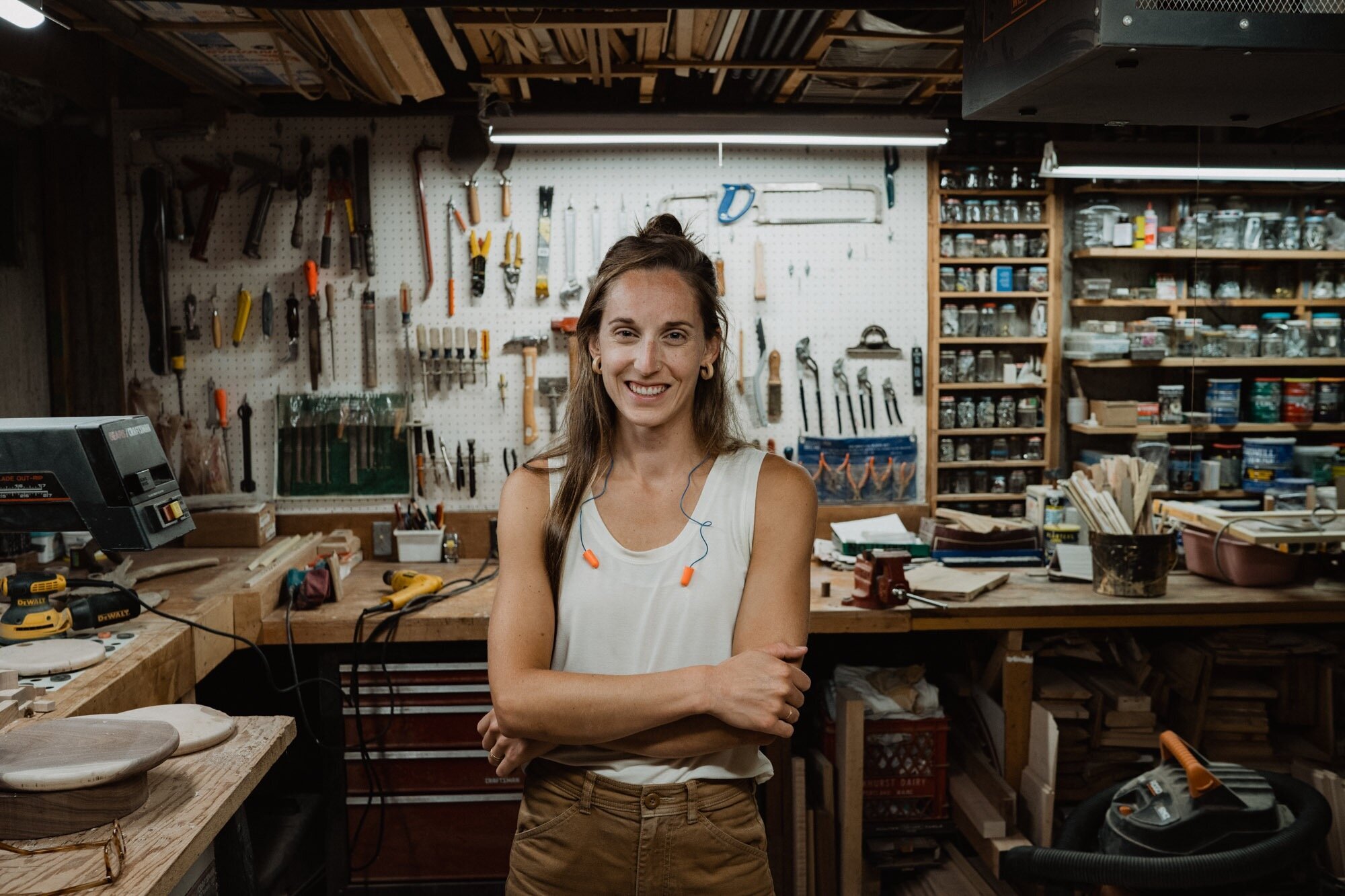
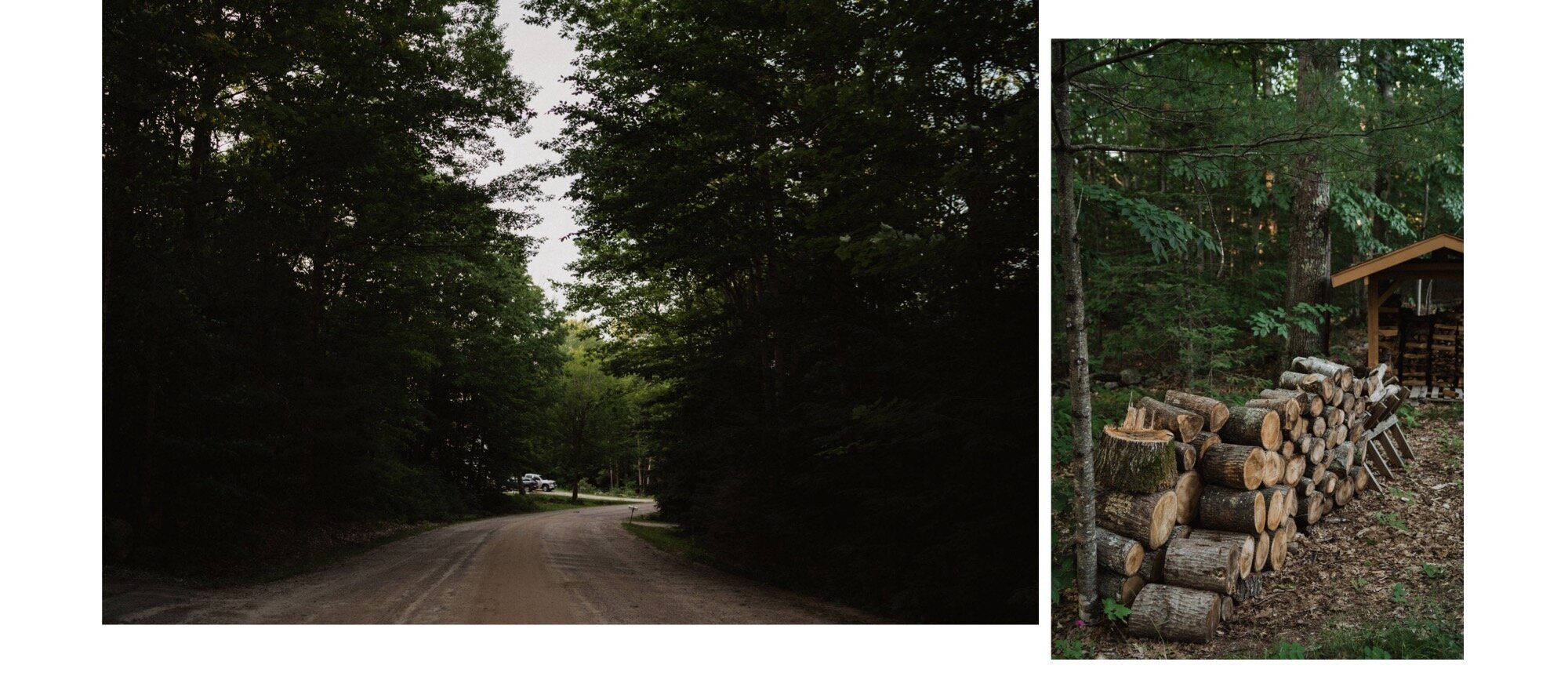
Tell me who you are and what you do.
I’m Monika and I live in Portland, ME and I am a kind of catch all creative if you will. I have a small business that is part time floral design and part time woodworking. The rest of my time I also spend helping other small businesses including a pottery studio, jeweler, some graphic designers in the area…basically I market myself as I try to do all the crafts possible and try to make a living off of it. But personally I do woodworking and floral design. In college I studied art and design and towards the end of my time, while I was working on my senior thesis, discovered that I really love art with purpose, if you will, a more utilitarian art form. So that’s where I got into woodworking a little bit more and the floral design is kind of mixed into that a bit, but just art the can be used and loved and brought into people’s lives.
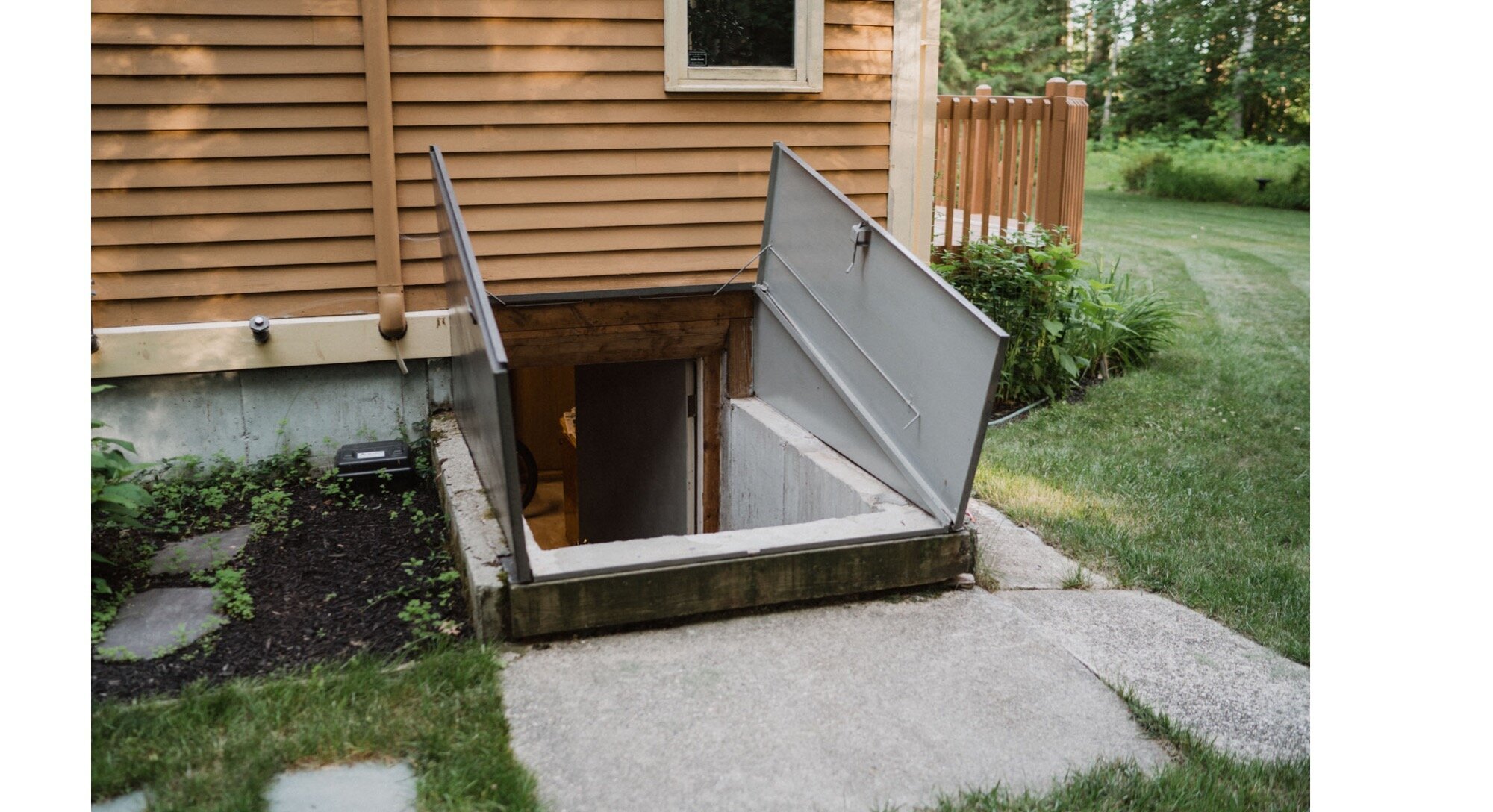
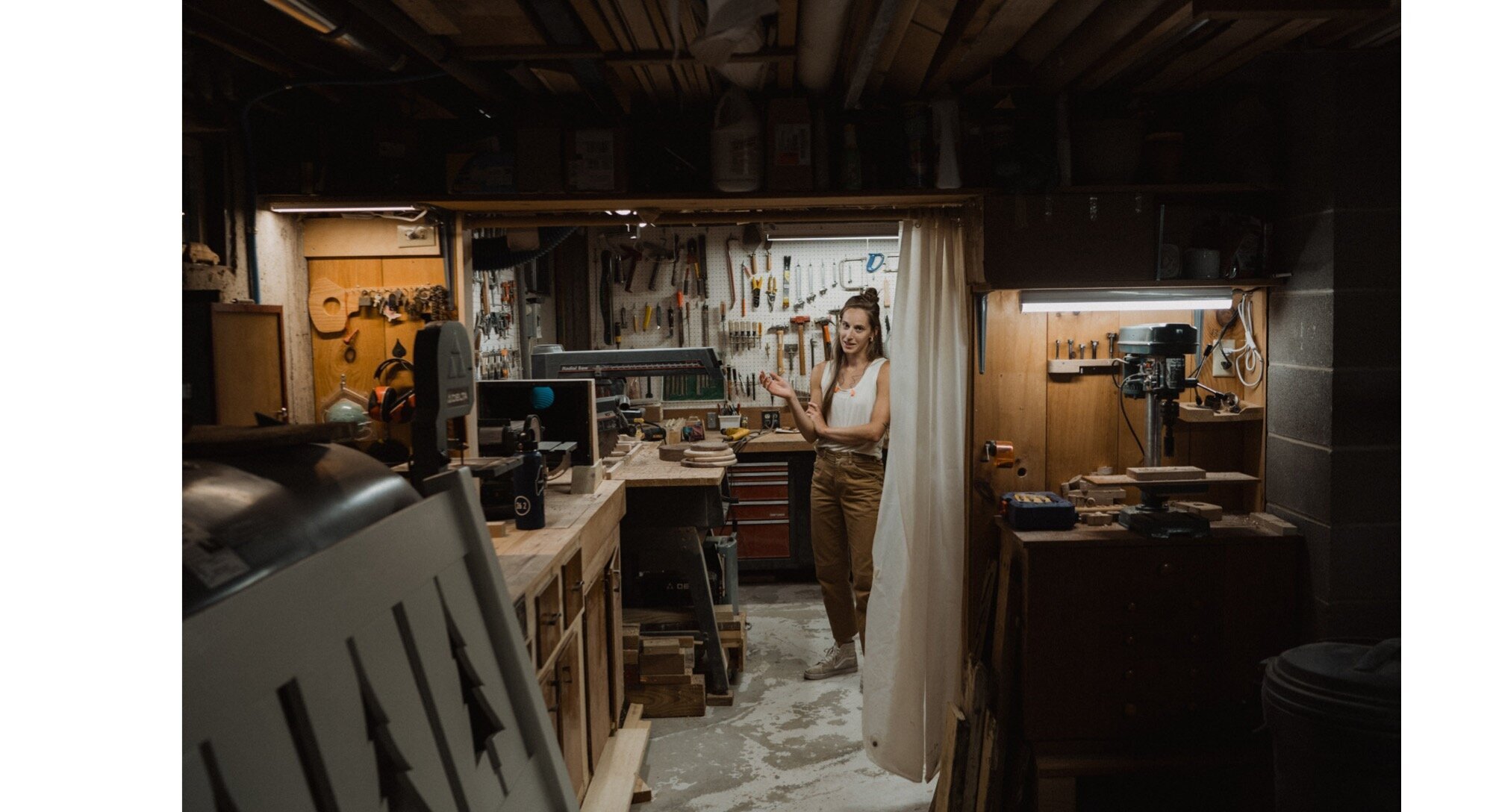
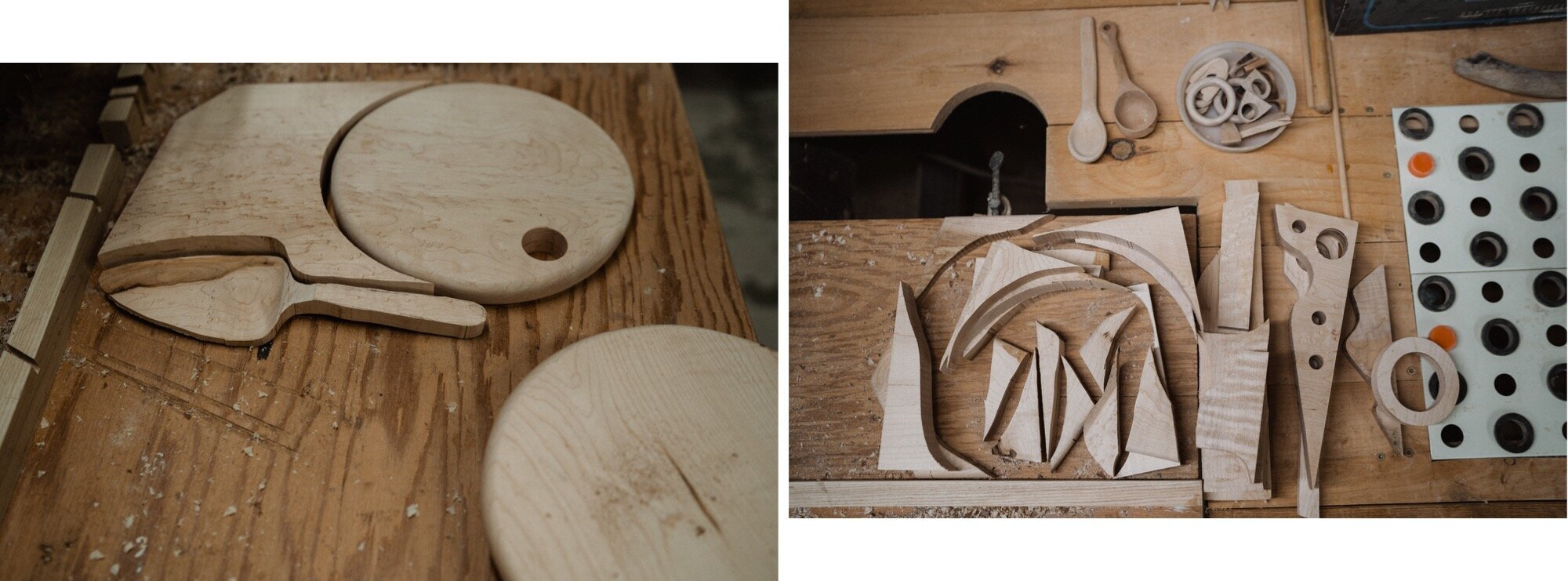
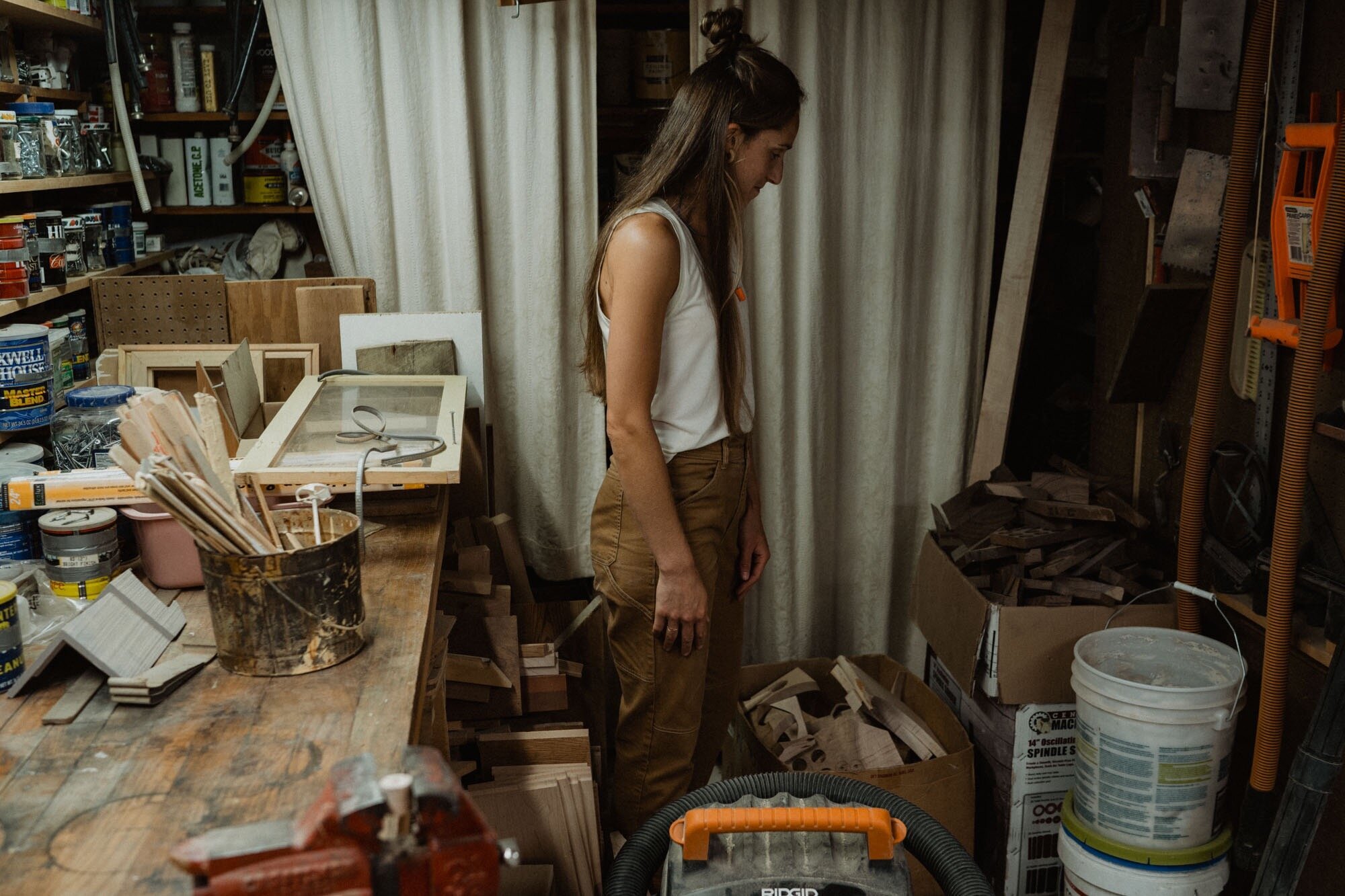
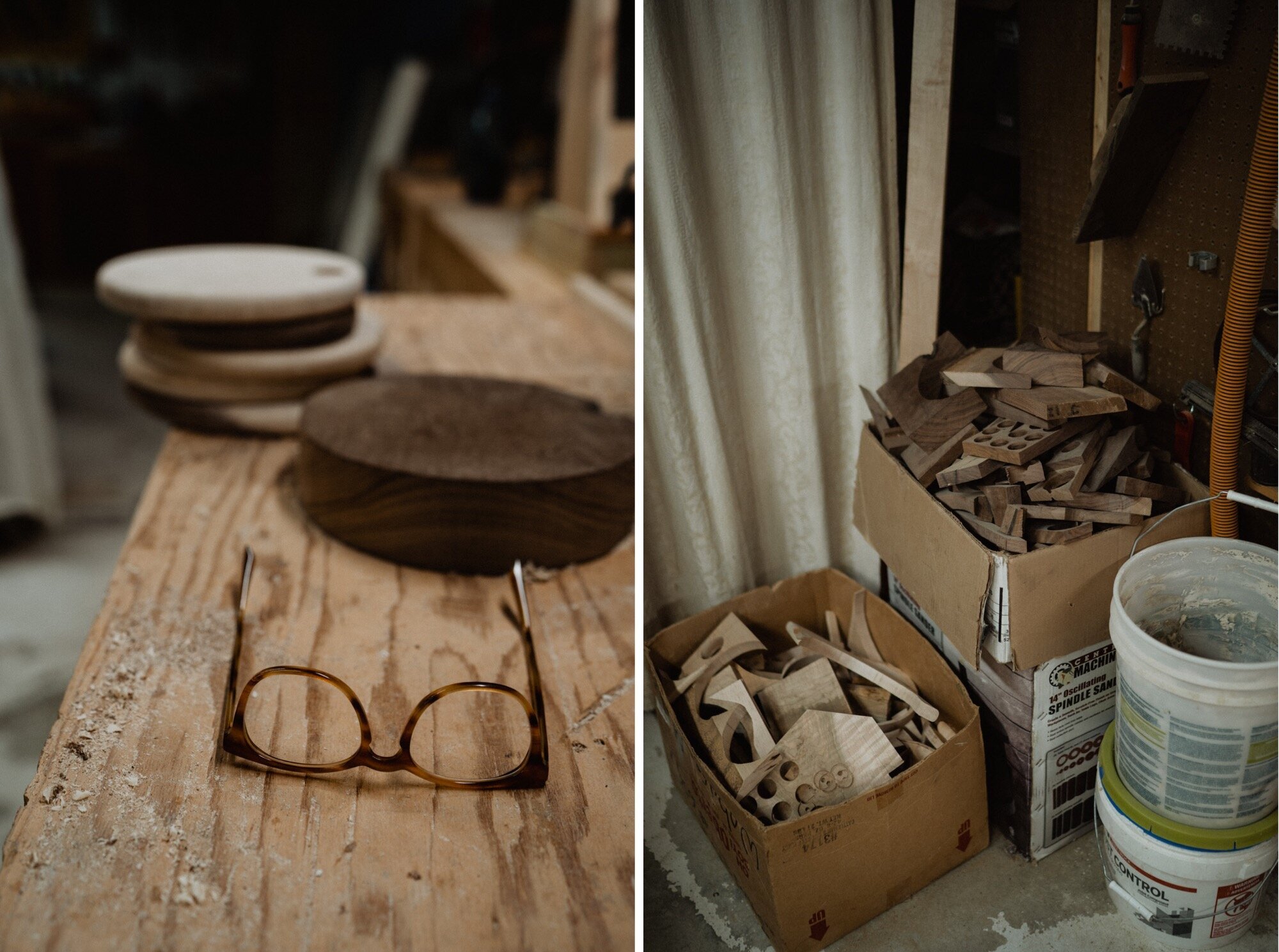
Did you grow up in a creative household?
No. (laughs) It’s funny, my mom and dad are really not that creative. My dad is very handy. I work out of his workshop. He can do most everything when it comes to working on projects but neither of my parents are artsy creative in any sense of the term. But my brother and I both ended up studying art in college and have gone on to pursue careers in creative fields. My high school and college had really great art programs and teachers I had along the way probably have influenced me quite a bit.
Talk a little bit about how you started woodworking.
I was always learning from my dad growing up in terms of using tools and working on stuff here and there. Then in college, for my senior thesis, I decided to shadow different artists and craftsmen around the area around the theme of the table, and gathering around the table and food. I worked with a master furniture builder to build a bench and then worked with another carpenter to build a table. One of my professors was a stone sculpture so I sculpted bowls. The potter who helped me throw bowls and plates. It's where I started delving into the more utilitarian crafts and the woodworking I just really enjoyed. The natural medium and wood sort of speaks a lot on its own. I put it on the back burner a little bit, not having a space to do it after school, and then moved back up here to my parents’ house.

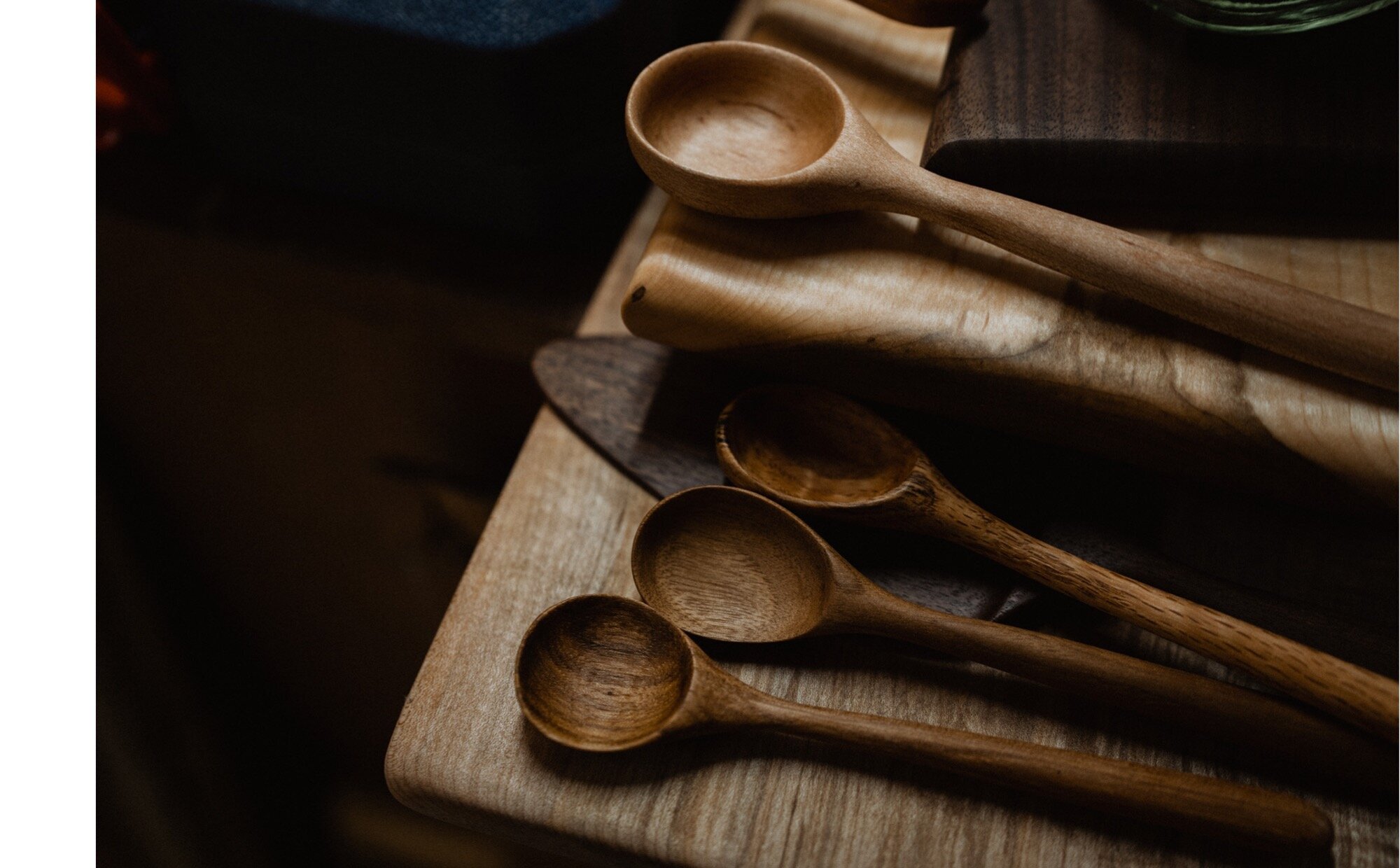
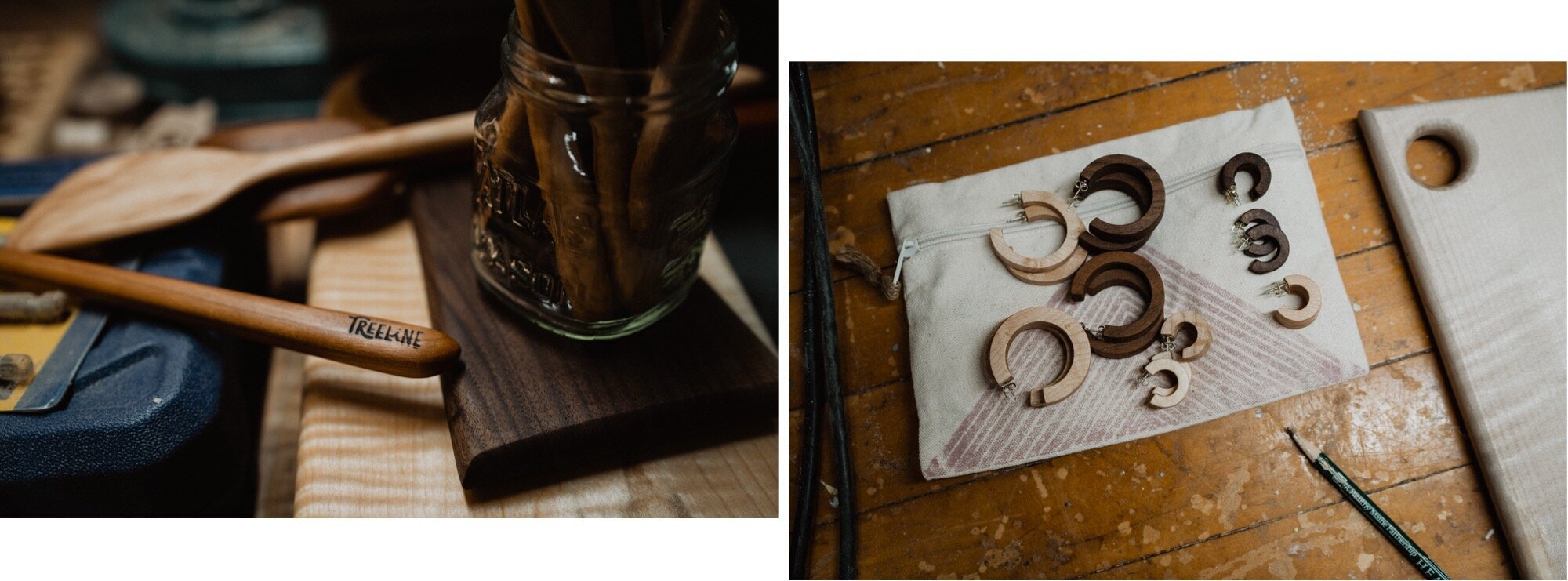
How long have you had your own business?
It’s taken many iterations. About three of four years.
How have things changed since then?
Besides rebranding and going through a couple name changes, in terms of the actual products, the woodworking has staid pretty consistent. Lot of cutting boards and utensils that fall into that “useful tools” for your home category. I didn’t necessarily think I’d go down the path of art or sculpture related things so I’ve down a few things here and there like mobiles or art pieces and jewelry. And the floral design I was always doing alongside of my business with other florists and put it all under one umbrella because I care a lot about the seasonality of Maine and what it has to offer and the woodworking and floral design kind of ebb and flow throughout the seasons.
Why is utilitarian art a focus for you?
I don’t want that to come across as, “I don’t care for art on the walls,” but for me, seeing someone use something and bring it into their home in such a way that it’s put to use for them and can bring beauty on an everyday level is really inspiring to me. One of the most annoying comments I get from people all the time is they see my boards at a show or a shop and they’re, “it’s too beautiful to use so I would just hang it on the wall.” No! Cut on it! Gouge it up! It’s meant to be loved.
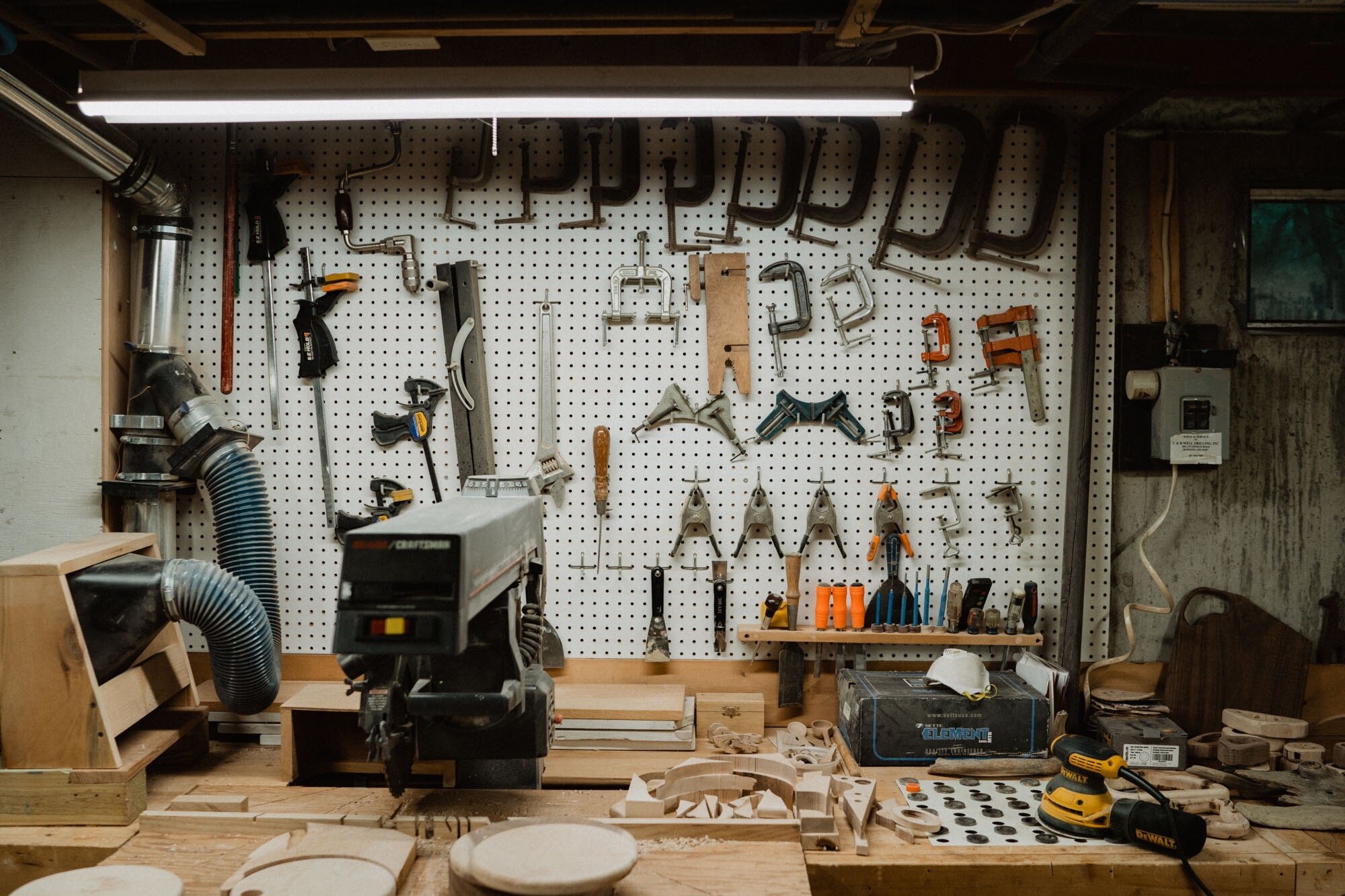
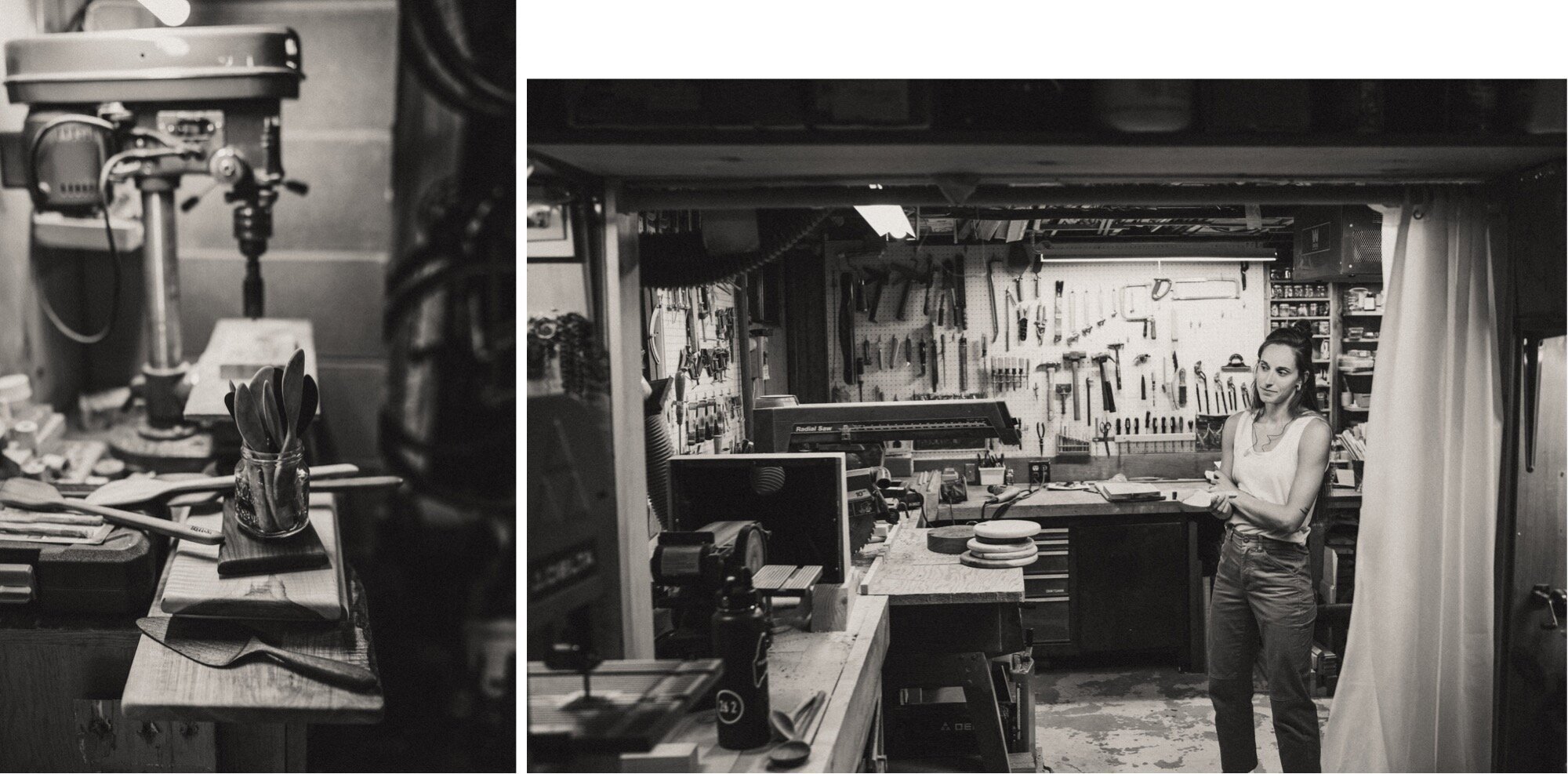
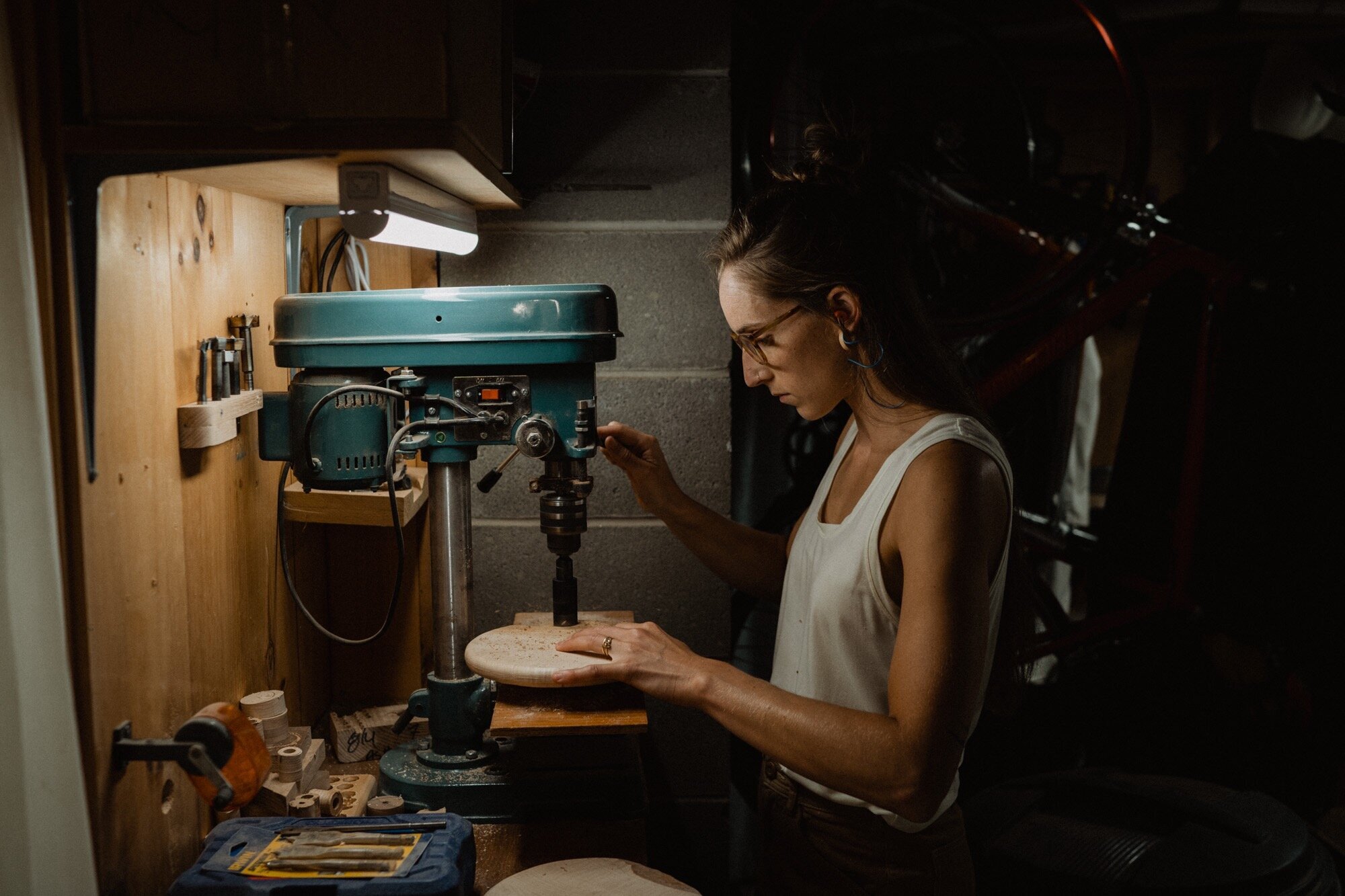
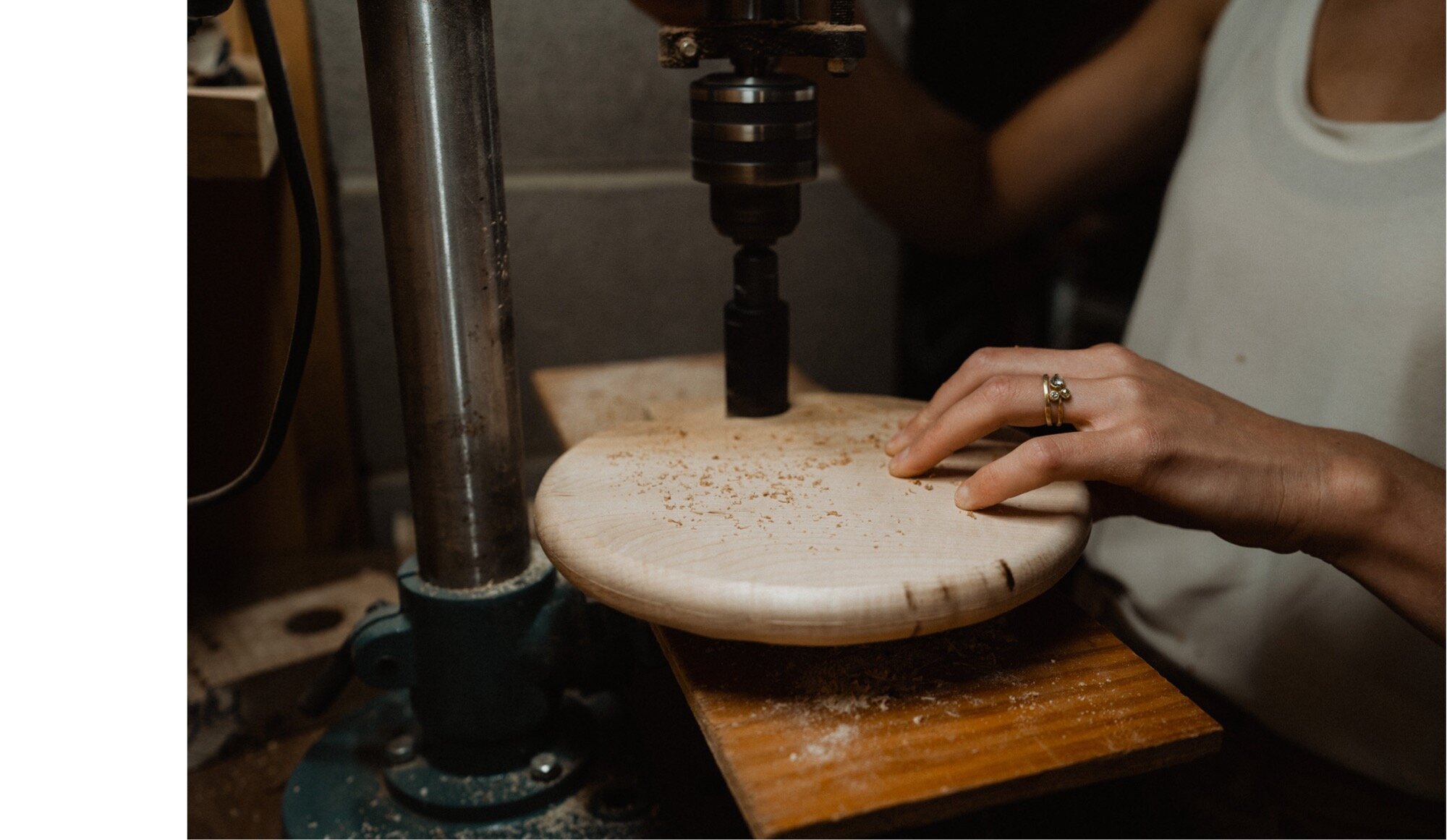
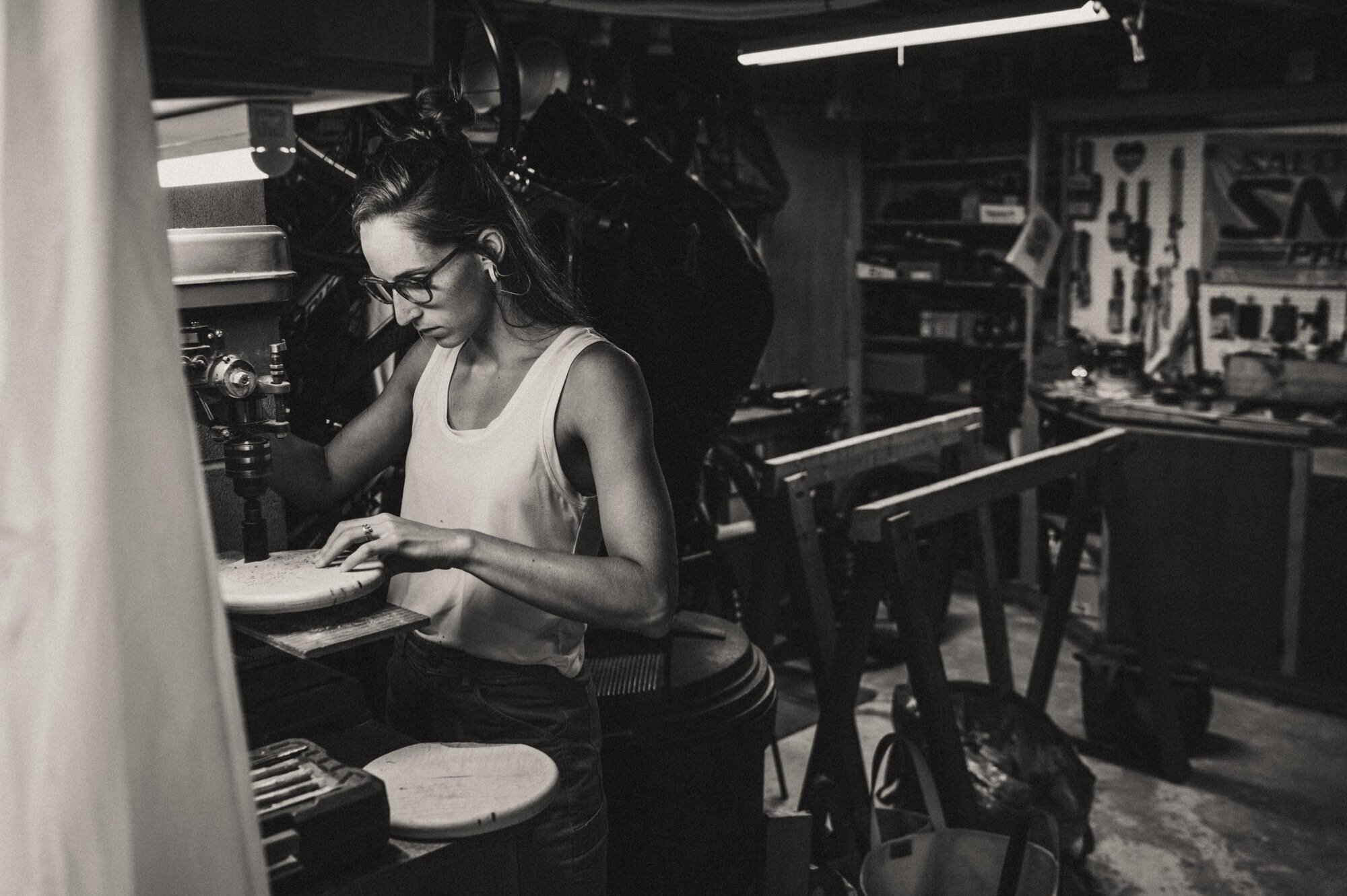
Where do you get your materials from?
There is a little local hardwood shop, Day’s, a mile down the road. I get a lot of my wood from the two guys that run that place. They have a little basement that has all their scraps and for awhile they were calling it “Monika’s Basement.” And a lot of friends of friends or my dad’s neighbors or friends. If I’m doing a larger project I might source a regular piece of milled wood but for the most part I’m just using scraps.
What’s the value for you in doing something by hand?
I studied graphic design in school and that was my first job and I quickly realized I could not sit in front of a computer for the rest of my life. I think I’ve always been drawn to the art and creating so after the quick dive into graphic design I realized I’m gonna go back to working with my hands. And it’s just so much more satisfying.
What do you hope people take away from their experiences with your pieces?
That’s a good question. I don’t know if there’s anything I necessarily hope they take away but I hope they can use it for a long time. I hope the pieces are aesthetically pleasing and timeless enough to be passed down throughout families. There’s such a push for local and handcrafted that I love that people are excited about that so when people buy my products in encouraging to know that do want to support artists and they care about design.
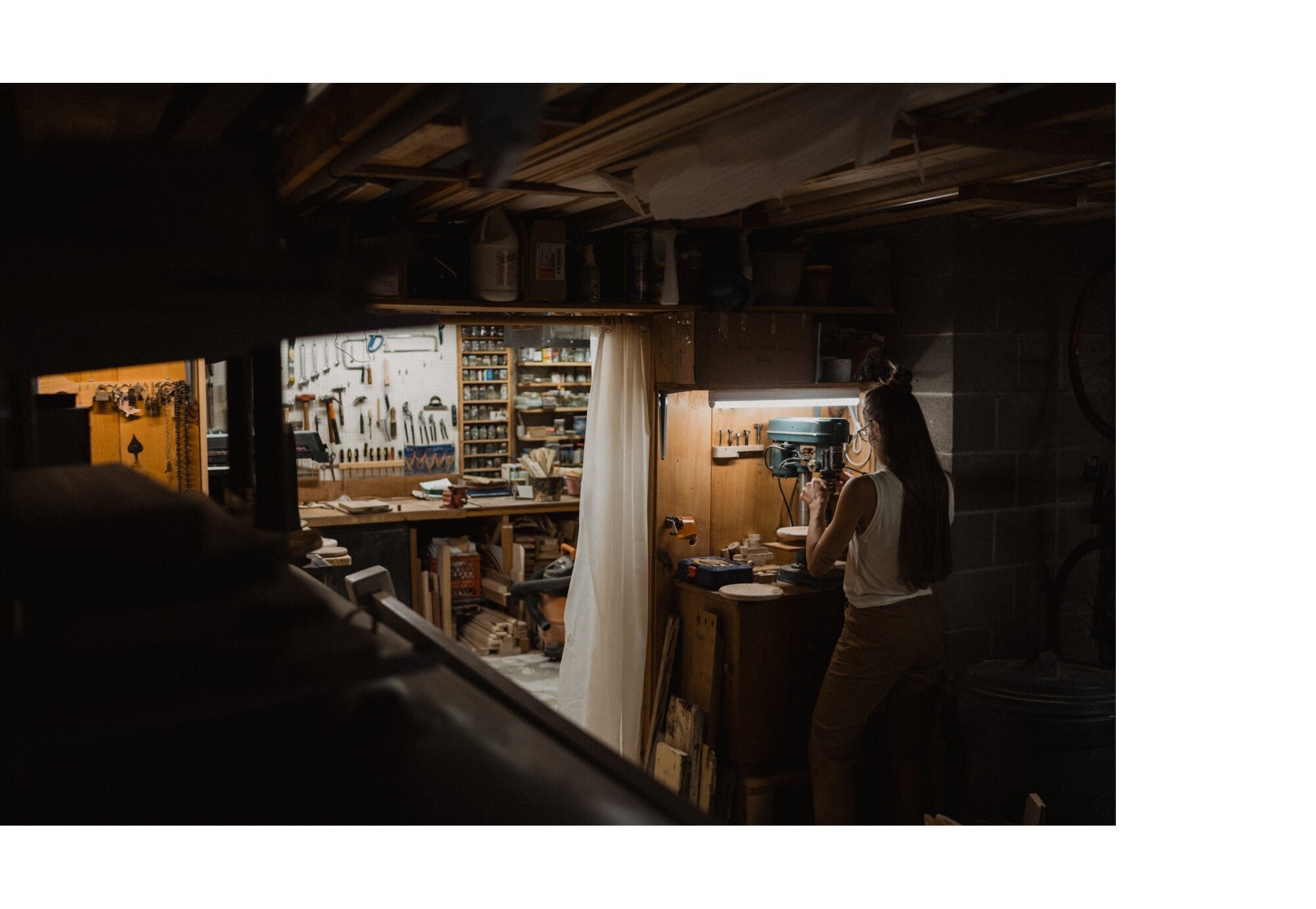

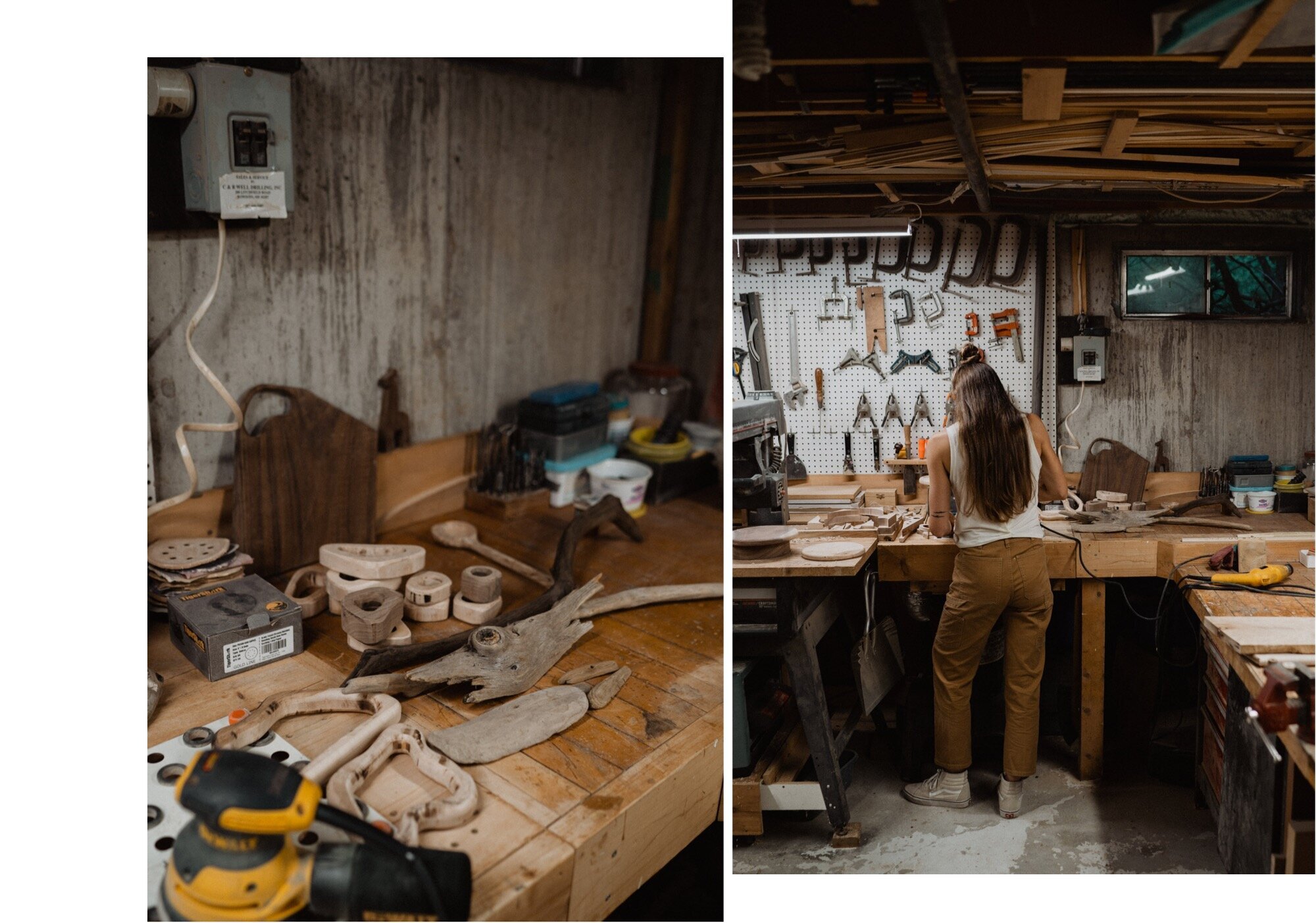
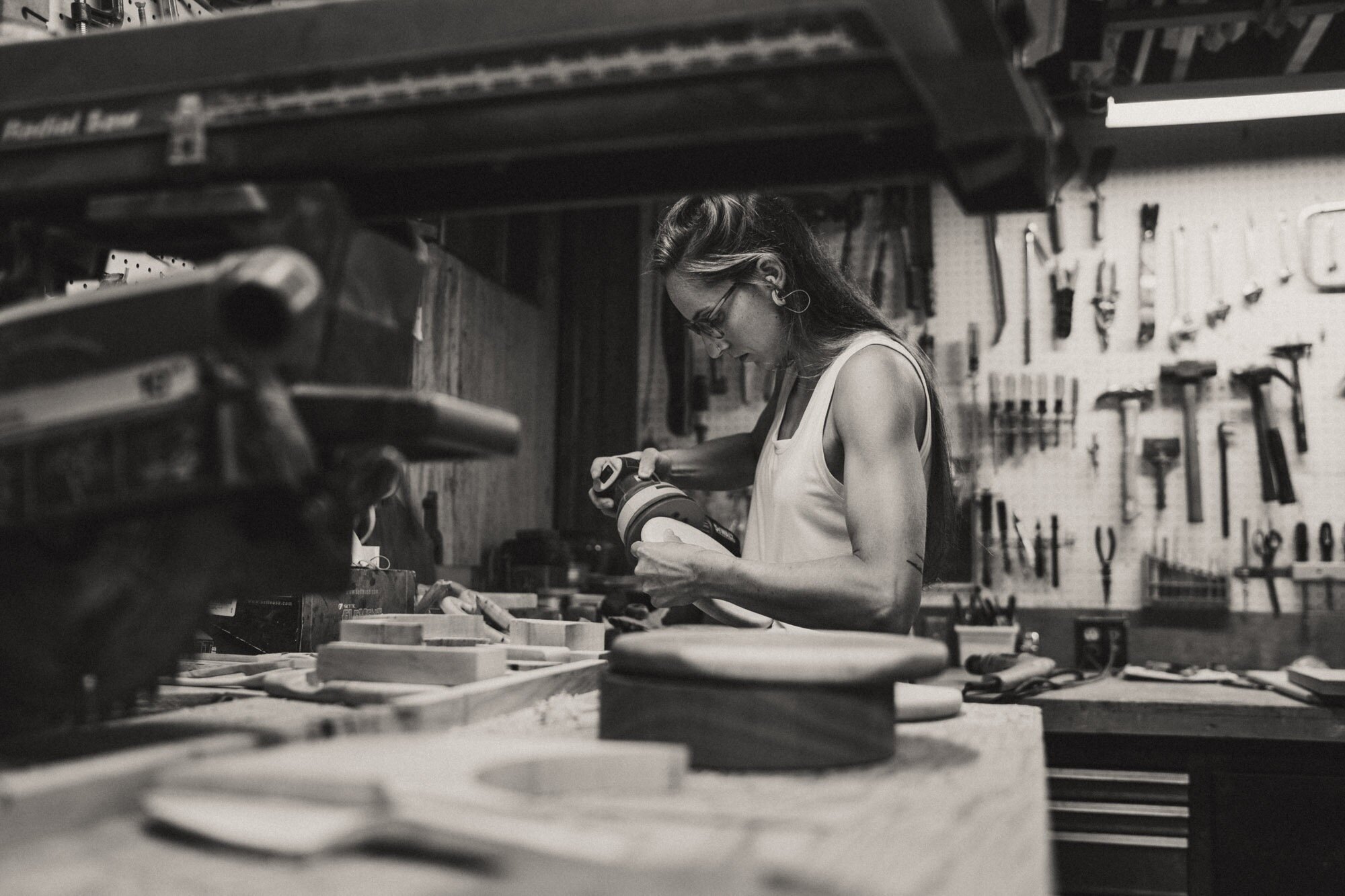
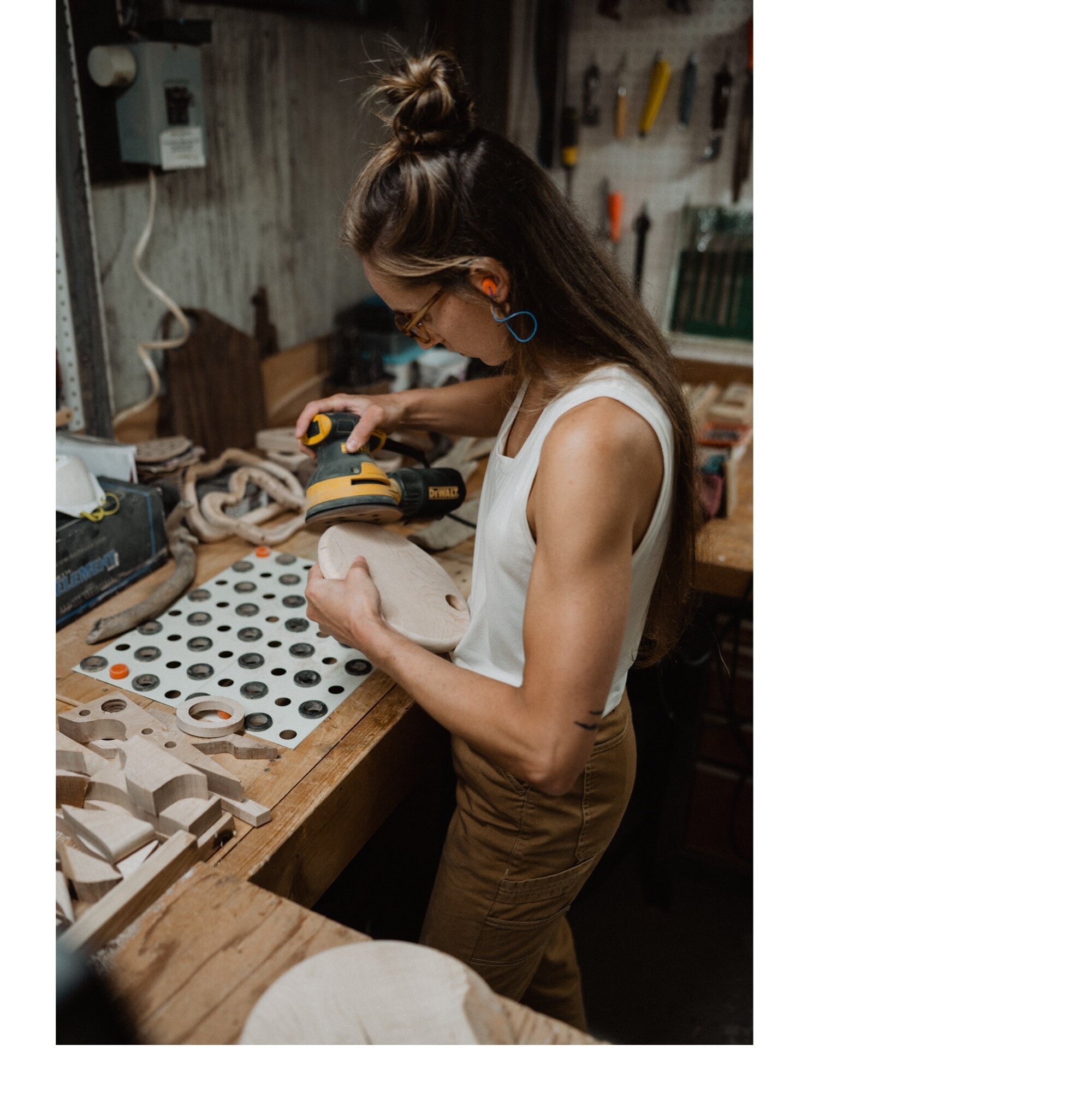
What inspires you in life, in art?
Definitely the mediums I work with which are straight from nature. I spend a lot of time in nature so I think that’s an indirect source or inspiration. What I love about wood and flowers is they really do speak for themselves and often times when I’m making a cutting board and there’s a giant knot, it’s like, “how can I design a unique shape so it works with this and speaks for itself and dictates what the end product will be. Same with florals, things that are locally grown are not going to the stick straight rose that you buy from across the country, across the world. You’re doing an arrangement or bouquet and you’re like, “this flower is not going to go in that direction, so I’m going to work with the fact that it’s moving in this direction and twisting this way.” I wouldn’t necessarily say that’s where I’m seeking inspiration from but my outcomes are naturally derived from the mediums I work with. Which is pretty cool!
What’s on your playlist right now?
Not much! (laughs) I have a knack for going through a ten hour workday and realizing I haven’t spoken to anyone or listened to anything! I love and appreciate music but I’m not the person who is finding new stuff. My mind is always running so I think that’s part of the reason I can just be silent for a long time.
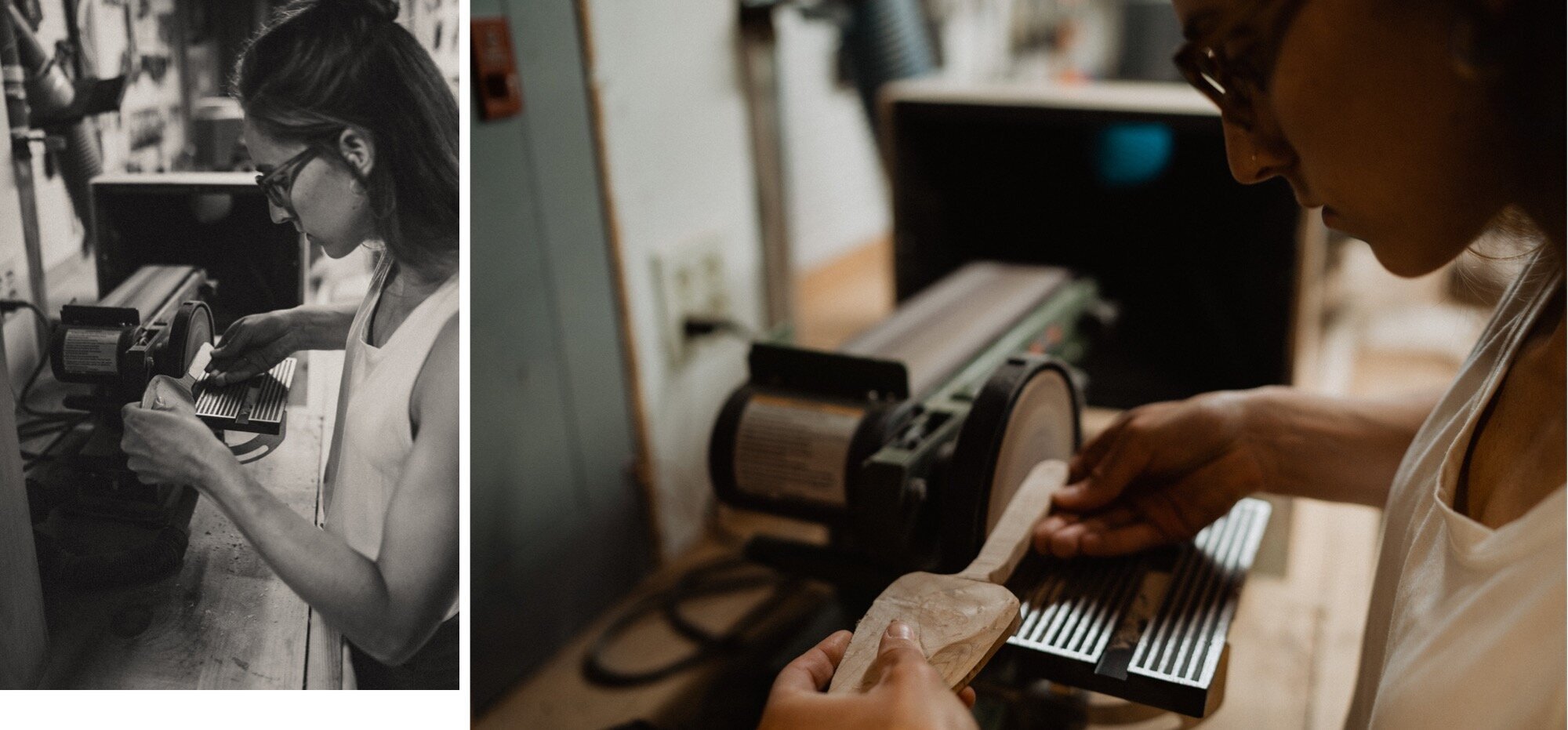
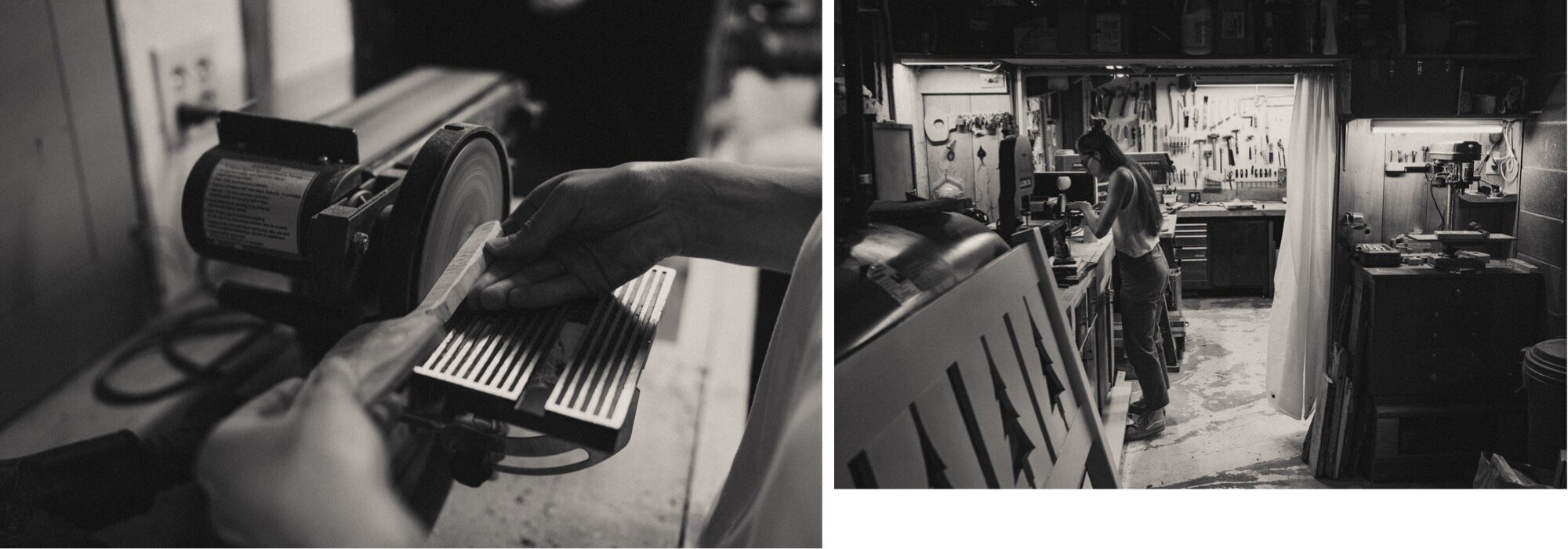
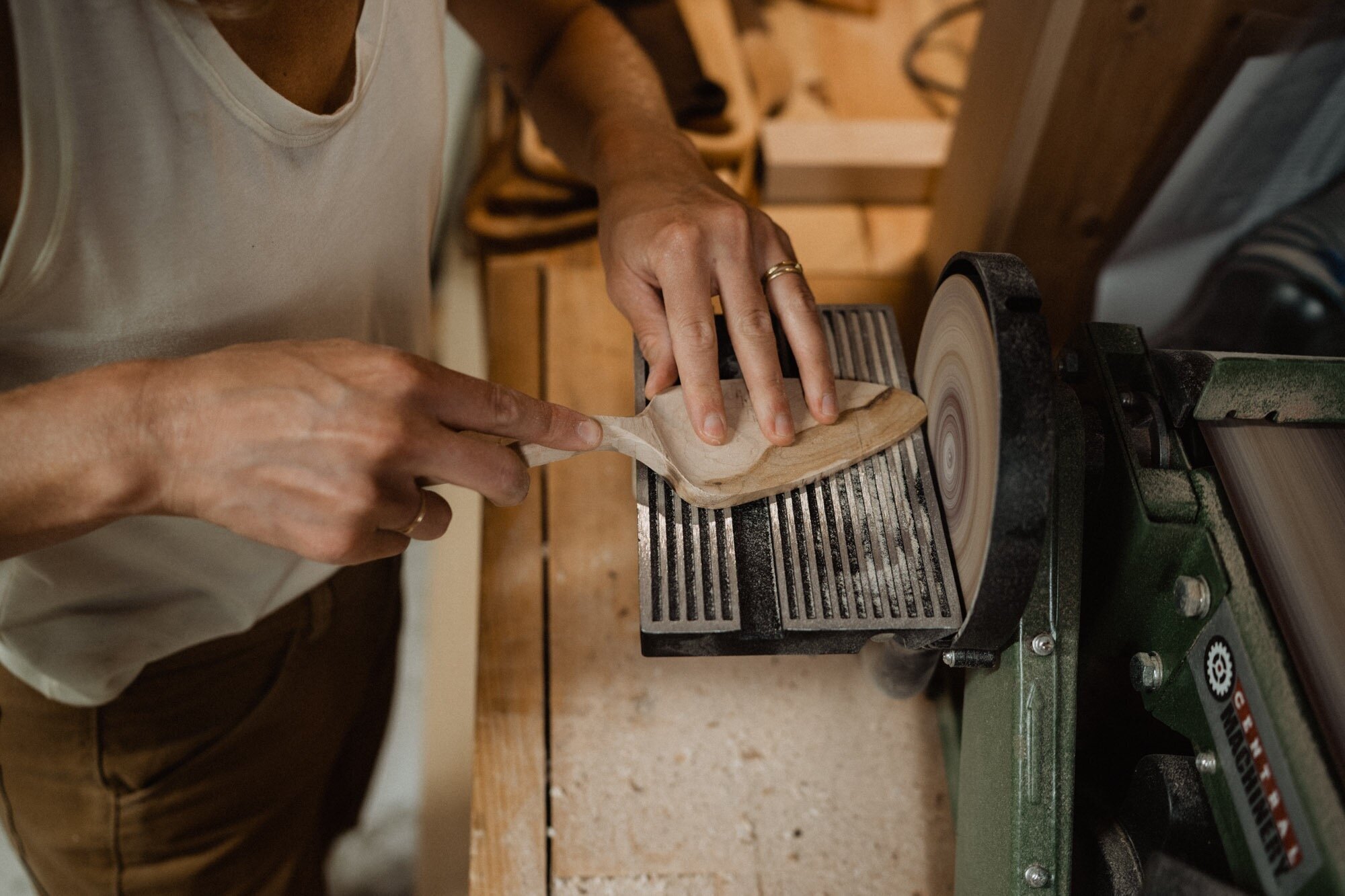
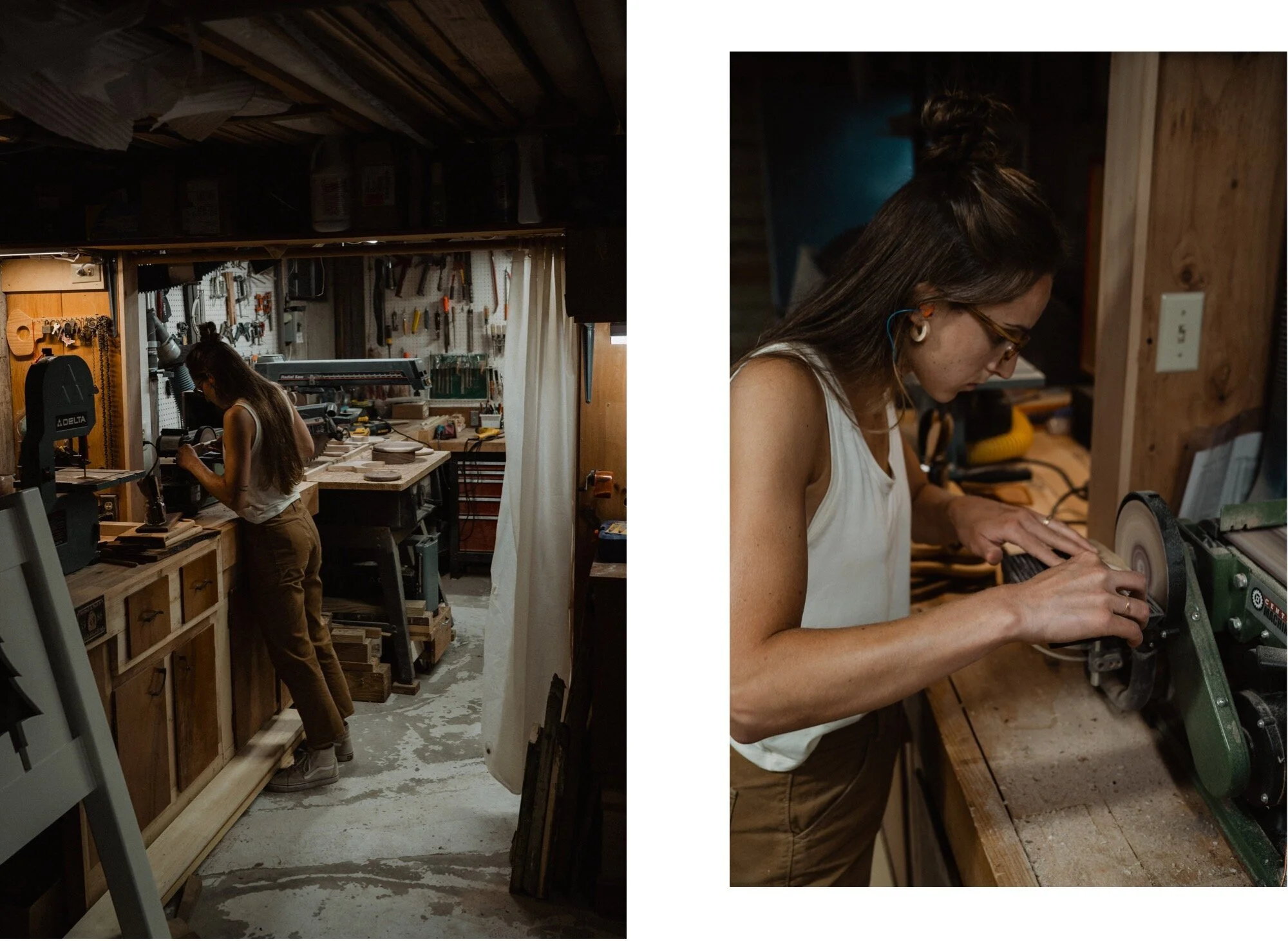
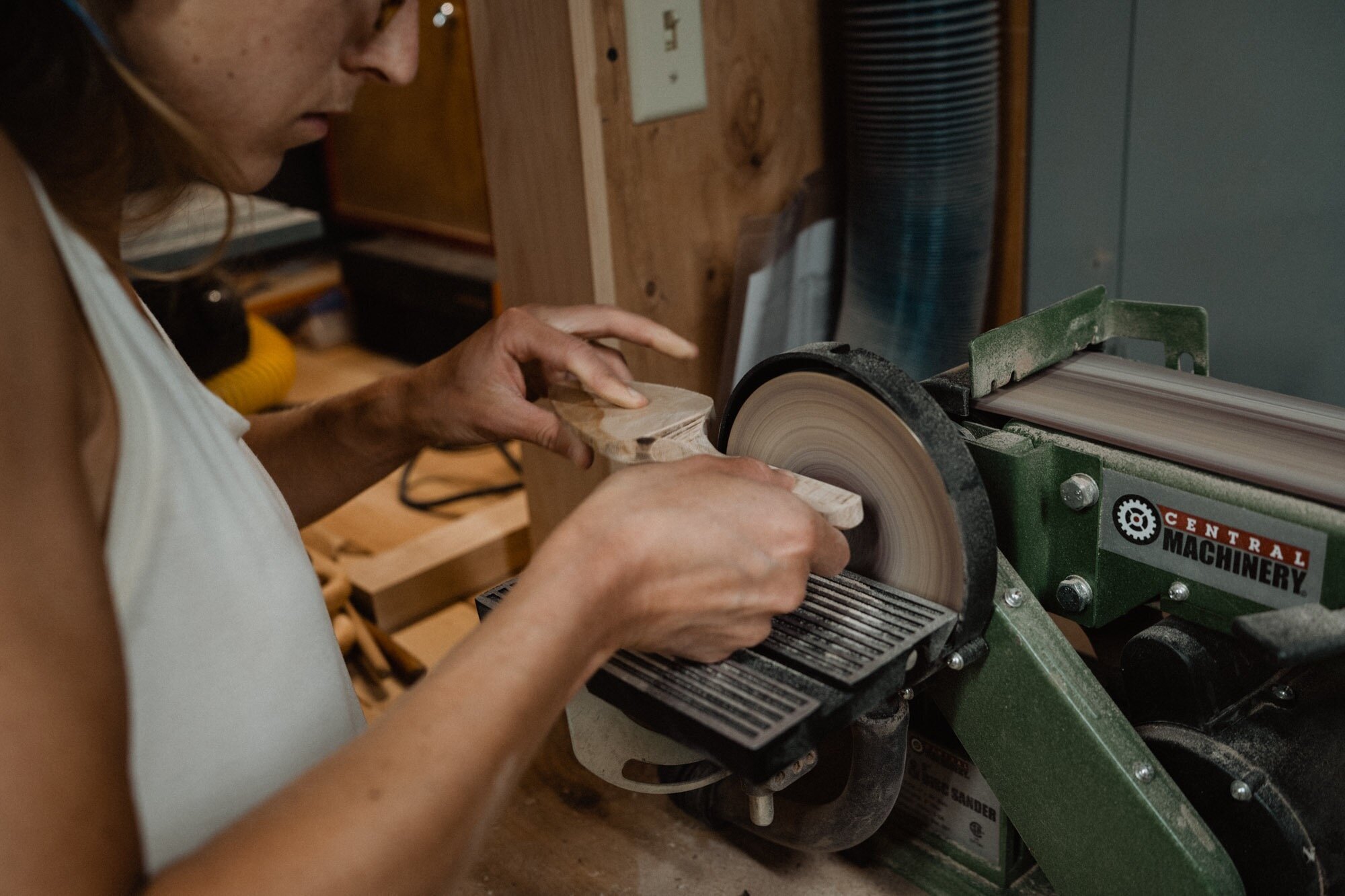
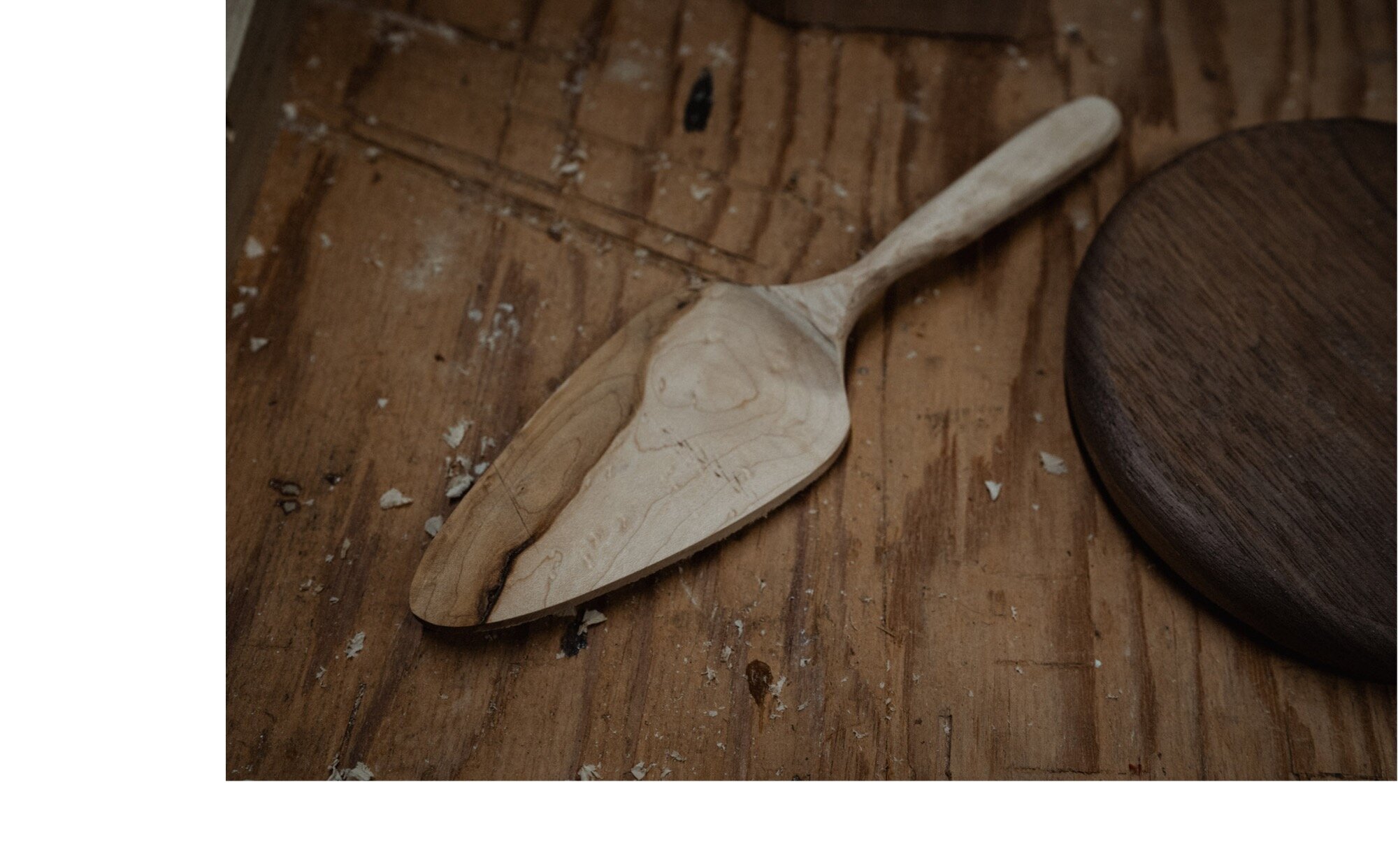
Tell me about the space you work in?
It’s mostly out of my parents’ house, my dad’s workshop. It’s pretty small but it’s jam packed with lots of tools and wood so it’s a great place to work. In the summertime it’s a little harder because I want to be outside more than in a workshop. That’s where I make everything and then do most of the finishing out of my home in terms of oiling, salving, branding all the boards.
Walk me though the process of a cutting board from start to finish.
Usually it is rifling through my woodpile and picking out a piece of wood I think will be suitable for a board and gaining some sort of inspiration from the grain or knots. I’m definitely drawn to wood that is more visually interesting than straight and simple. Normally I’ll start sketching on the piece of wood itself, many times over, erasing and resketching. Things are not thought out ahead of time. It’s really just looking at the piece of wood and trying a few things. Then once I’ve decided on a shape I’ll cut it out with the jigsaw and use the drill press to cut out a hole for a handle. And depending on if I’m going for a hard or soft edge I might use a router to smooth out the edges and then it’s just a lot of sanding. Lastly, soaking in a mineral oil and finish it with an organic beeswax salve.
Where do you see your business going in the future?
I have a lot of people ask me about furniture. I’ve done a decent amount for myself but I have a much lower standard for myself than I would for a customer. It would be cool to takes some classes. I don’t know if that’s necessarily in the business plan but I’m always down to try new things and don’t stick with anything for very long so the idea of branching out sounds fun.
And I would love to get a lathe one day. I’ve done some turning in the past but that would be a lot of fun.
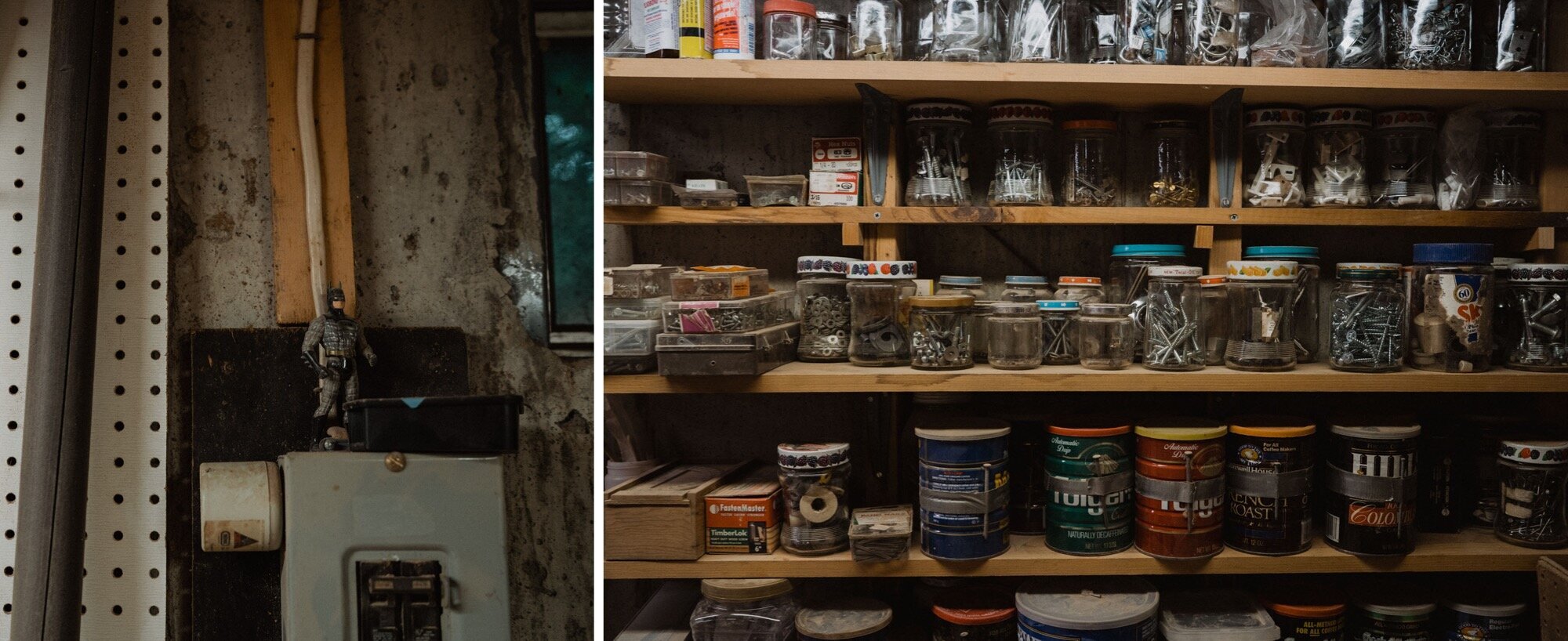
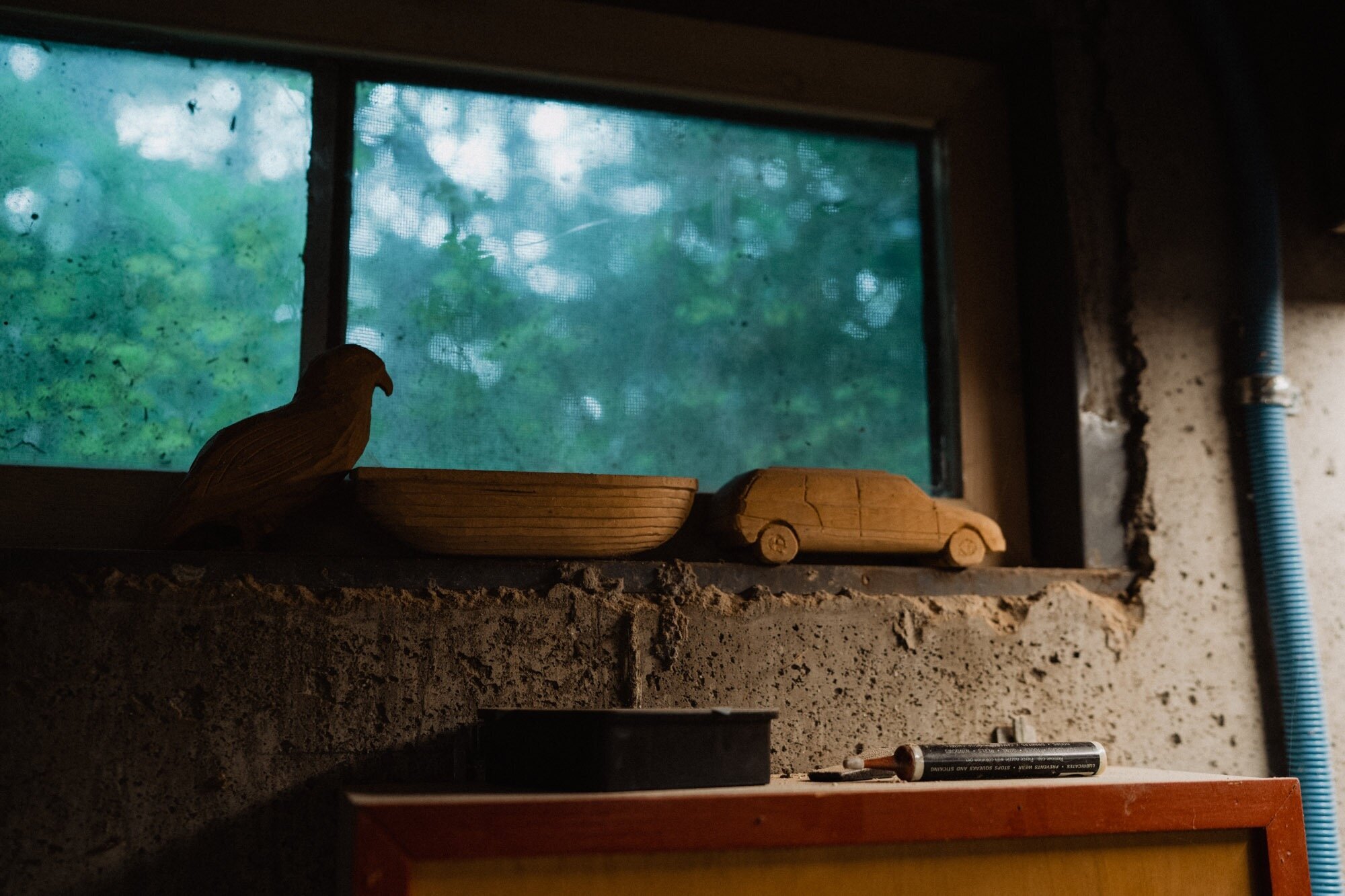
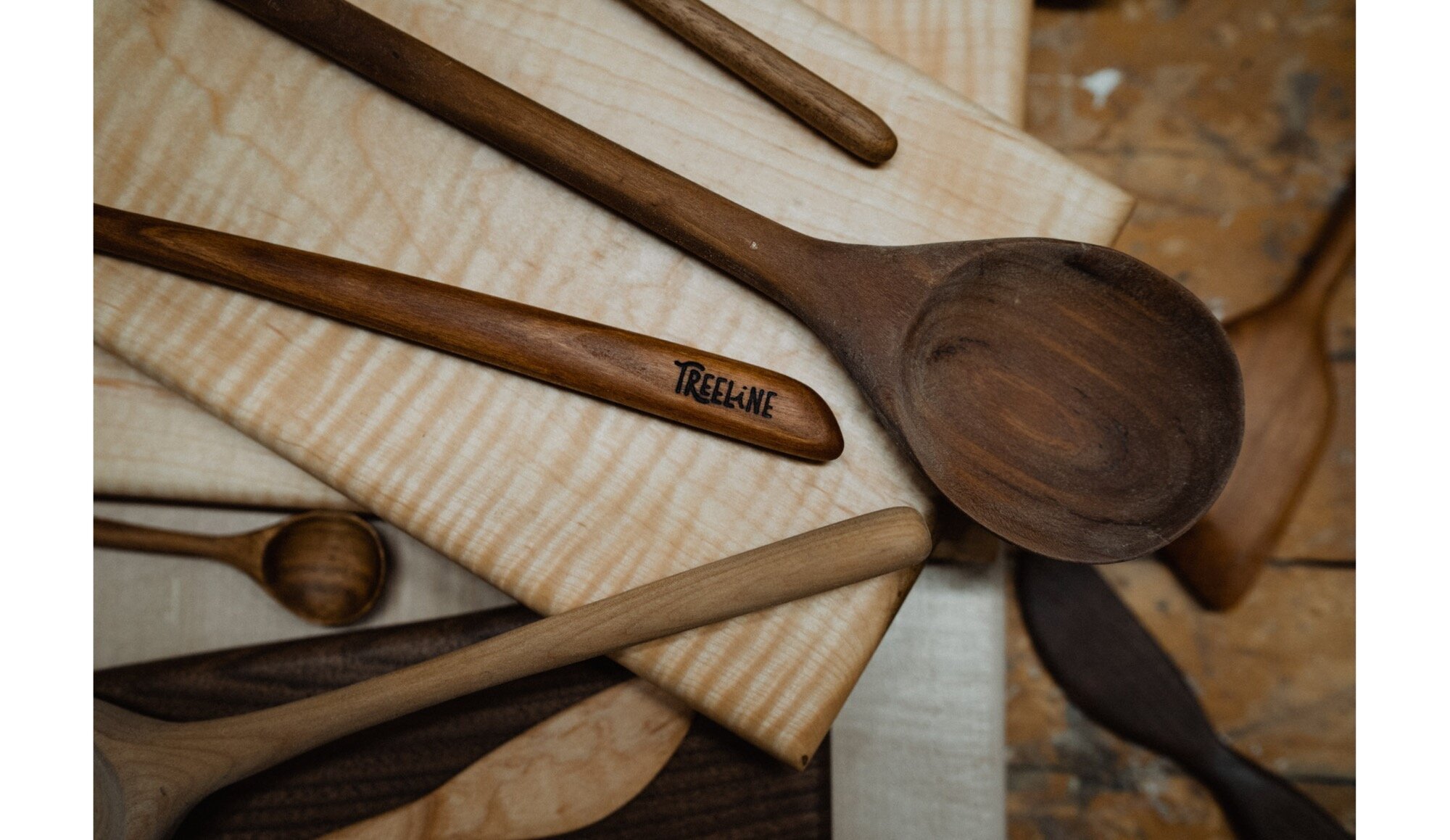
Why do you feel compelled to create?
It’s definitely something I struggle with. There’s a lot of stuff in the world we live in and it can be very overwhelming. I think that I personally hold a pretty high standard for myself in terms of the products I put out there. My hope is that somebody who is purchasing a cutting board from me, that could replace their crappy plastic cutting boards and last them a long time. But I struggle with the idea of putting more stuff out into the world but at the end of the day, both of the mediums I work with decompose or you could burn them so it’s not gonna sit in a landfill. (laughs) To hopefully bring a little more beauty and joy to people using products.
What does art mean to you? What role does art play in your life?
I think that art and beauty are fairly synonymous for me. I think that nature can be art to some degree. If you’re observing beauty around you, or choosing to put beauty in your life or your home, those are forms of art. I think that can bring joy or a sense of peace or a number of emotions and I think that is valuable.
It has stories. My husband and I are pretty diligent are the art in our home. It’s either from someone we know or a family member and that means a lot to know more of the story behind it.
What advice would you give to somebody that thinking about a career in a creative field?
Get off Pinterest. Get off Instagram. I think that it can be really discouraging to see everything that is already out there all the things that everyone is doing. When you shut off technology and just look inward and think about what you want to do, and be reminded that maybe it’s be done before but it hasn’t been done by you before, is super valuable. I think that’s where a lot of creativity and inspiration can come from. I’ve had times where I’d been working on a custom order and I’m constantly scrolling for inspiration and walk away from that feeling, “I don’t feel inspired and I don’t want to copy other people. So what am I left with?” As soon as I shut that off and just allow myself to be in my own head for awhile, that’s where a lot of inspiration comes from. That would be the first thing.
And just ask for help. There are some many people that have gone before you. You can be a part of such a great community of creatives that are willing to help. Be optimistic that people are willing to help and want to help.
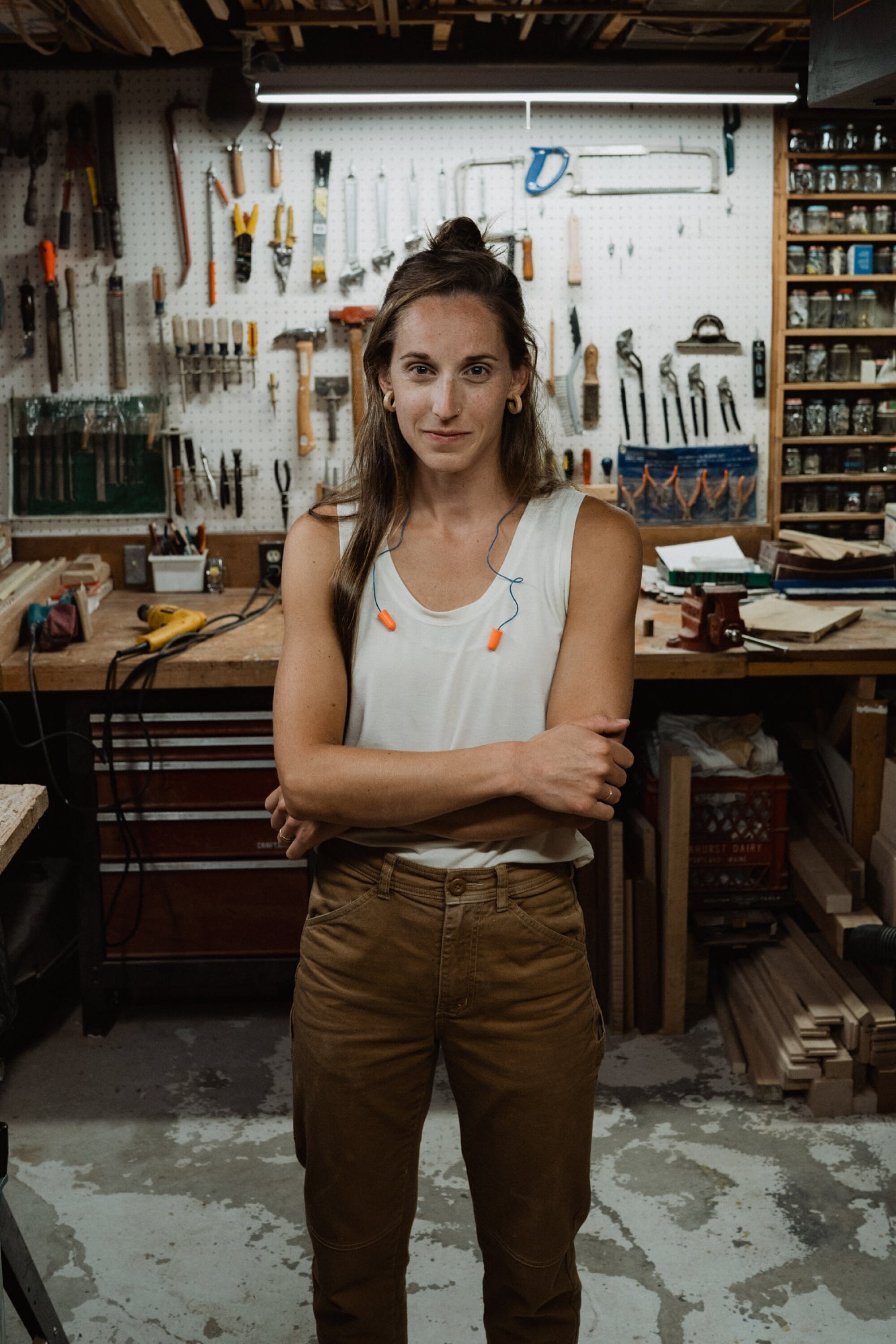
See more of Monika’s work here:
